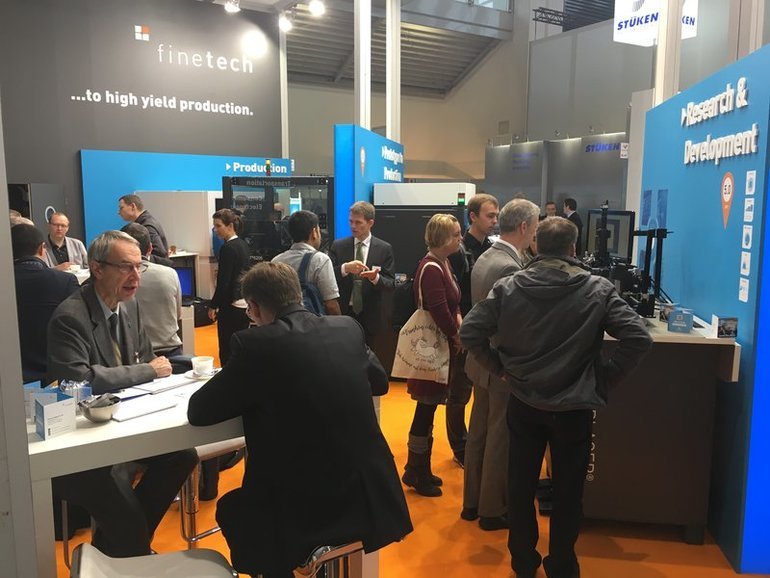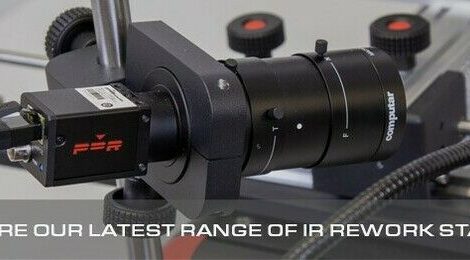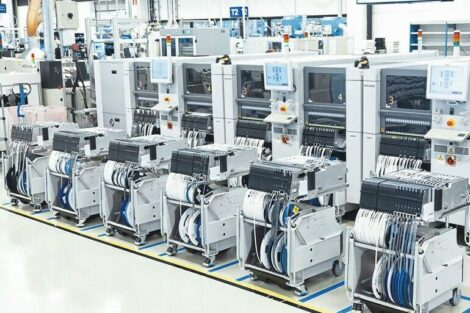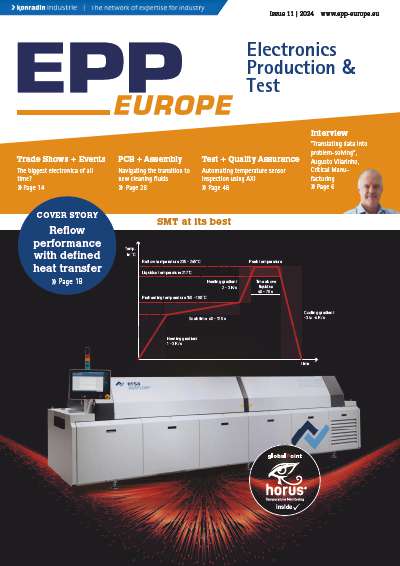Finetech presented new product highlights for advanced packaging and SMD rework and attracted more visitors than ever before at productronica 2017. The company also celebrated their 25th anniversary and premiered two products, FineXT 6003 and FineXT 5205. These fully-automated production cells are specifically for customers looking to transfer their developed prototypes into series production. For this, both machines strike a balance between optimized throughput, high placement accuracy and process flexibility. Primarily designed for the manufacturing of sensors, MEMS/MOEMS, optical transceivers, active optical cables and planar light wave circuits, the company’s production systems can be flexibly configured to support a diverse spectrum of applications and technologies.
By expanding the company’s product portfolio, they can now offer customers a consistent line of compatible machine solutions from product development to series production. Certified assembly processes created in the R&D stages can be easily transmitted and scaled according the requirements of full production environments.
The company’s automated die bonder division at the trade show was completed by the Fineplacer femto 2, a sub-micron die bonder for development and production. Designed for complex applications with highest accuracy requirements and a diverse mix of bonding technologies, the system is suited for demanding prototyping tasks, as well as, high yield production of sophisticated semiconductor products.
Vacuum bonding and in-situ parallelism control
Apart from production equipment, the company also presented some product news for the R&D die bonders. One of the highlights was the vacuum bonding module for the Fineplacer sigma, which enables to perform the whole spectrum of assembly and packaging technologies under vacuum. Precision die bonding under vacuum offers many advantages and allows processes otherwise unattainable at atmospheric pressure. Hermetic sealing is taken to the next level, void density is significantly reduced, and materials and processes can be studied in a near oxygen-free environment. Advantageous for materials prone to oxidation, e.g. indium, or for applications requiring extra reliability and stable connections, e.g. power electronics.
Another highlight on display was a Fineplacer extension module for parallelism control during bonding. It was specifically developed for applications where large-area components with thousands of small contacts, e.g. IR sensors or pixel detectors, need to be bonded. In order to function properly, an absolutely coplanar attachment is mandatory. However, with bump sizes as small as 5 micron this can be a real challenge. This solution allows for an in-situ coplanarity measuring and readjustment during bonding, ensuring a 100 % homogenous attachment of all contacts/bumps across the entire component surface.












